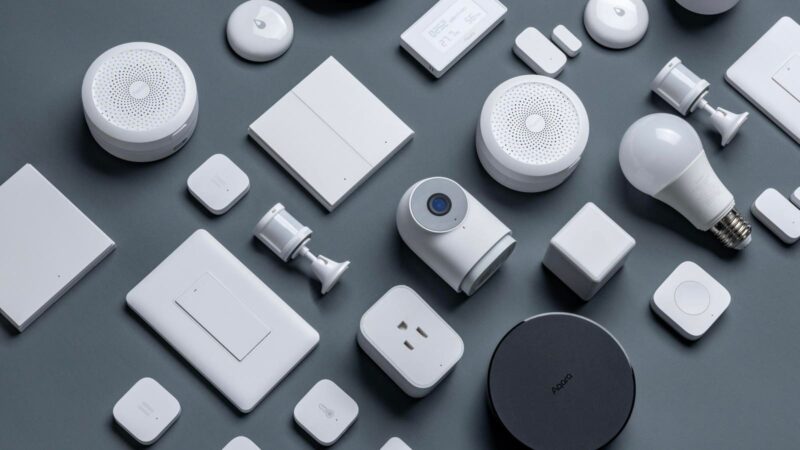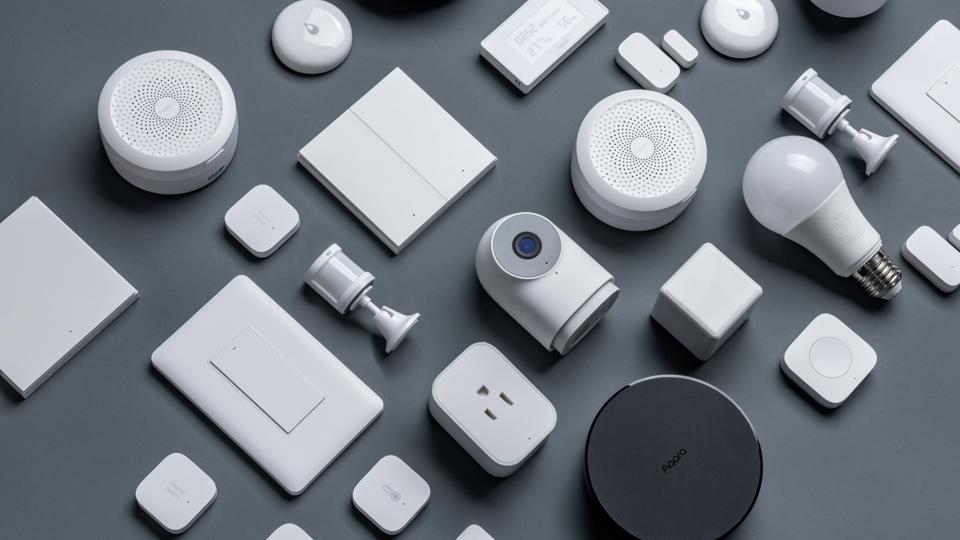Aqara smart home devices
Aqara
I’m a smart home nerd. That’s a given after running a smart home-focused website for nearly a decade and testing pretty much every platform, system and setup available.
As such, people often ask me for advice on how to expand their smart homes or even create a brand new one.
If it’s the latter, and they are looking beyond smart lights and voice control, there are a few brands I usually recommend. The likes of SwitchBot, Tuya, Sonoff and Aqara not only offer the basics to get started – think hubs, sensors, lights, power and more – but do so at very competitive prices.
It’s Aqara that I’m focusing on in this guide, read on to get an overview of what an Aqara smart home setup is all about.
Aqara: The Basics
In the past few years Aqara has gone from being a relatively unknown budget smart-home brand with a messy app to one of the most serious contenders in the space (albeit still with a bit of a messy app.)
What was once a niche hobbyists’ brand of choice, Aqara has expanded rapidly, with a jam-packed Amazon storefront full of devices and the Chinese brand even has shelf space in Apple Stores now too.
Traditionally, Aqara’s system was built around a hub that connected with various Zigbee ‘child’ devices, but in the past couple of years the commitment to being more open has made Aqara a great option for starting, or expanding a smart home.
The Aqara Hub M3
Paul Lamkin
The Hubs
To get started with an Aqara system, you’ll need to invest in a hub.
The good news is that Aqara’s hubs can be picked up at super low prices (the M100 is only $26, for example) and they are often packed into smart home devices such as the Camera Hub G5 Pro ($179.99) and the Doorbell Camera Hub G410 ($129.99) too, so you don’t actually need a standalone, dedicated, device to act as your control center.
A lot of Aqara’s newer hubs also function as Matter controllers and Thread Border Routers too, and are designed to migrate legacy Aqara/Zigbee devices into a more flexible, brand-agnostic, interoperable smart home set-up.
Interoperability is an important word in the smart home world and, due to Aqara going all in on Matter, is one of the main reasons I’m quick to recommend it to people just starting out.
If you go out and buy a load of Aqara gadgets now, you’re not tied into a walled-garden, and it’s easy to expand your system further down the road with devices from other brands, or sync your Aqara system with other popular platforms like Alexa, Apple Home, SmartThings and even more complicated setups like Home Assistant.
You can also, thanks to Aqara’s ARK Tech, team up multiple hubs on the same system, safeguarding you if any hub was to suddenly go down.
In terms of Matter device type support, Aqara is one of the leading lights for the standard. Back in April, it added support for over 50 Matter device types that were introduced in the 1.2, 1.3 and 1.4 updates.
Aqara’s Advanced Matter Bridging also lets its hubs push automations and triggers into other platforms, including for device types that don’t yet support the categories natively.
So you could, for example, run your Matter-enabled air purifier via a Google Home routine, or trigger Apple Home automations with motion or face recognition from an Aqara camera.
The flagship standalone Hub, the M3, is priced at $130 and offers multi-protocol support including Matter and Thread.
The older, but still popular, Aqara Hub M2 is more affordable at $39 but doesn’t have Matter controller or Thread skills.
The Aqara Camera Hub G2H Pro
Paul Lamkin
If you want a camera and hub combo but don’t want to fork out for the G5 Pro, then the G2H Pro Camera Hub is a good option at $70 and there’s also the $110 Camera Hub G3 but, like the M2, these aren’t Matter Controllers, but can act as Matter Bridges, but more on that in a bit.
The Aqara Hub M1S Gen 2 is a pretty ancient option now but, at $56 is pretty cheap, doubles as a night light and also has an onboard speaker that can be used for things like doorbell chimes or notifications.
Finally, there’s the swanky Aqara Panel Hub S1 Plus, a 6.9-inch touchscreen smart home hub designed to take on the likes of the Amazon Echo Hub, or higher-end control panels from the likes of Control4 or Crestron. It’s not available Stateside yet, but costs £289 in the UK.
The Devices
Once your hub is in place, the devices you pick to sync to it will matter (pun very much intended) when it comes to automating your smart home
That’s because, even if you opt for a hub that doesn’t double up as a Matter controller, it will be able to act as a Matter Bridge though and let you control your Aqara Zigbee devices within a Matter smart home system, whether you use Alexa, Google Home, Apple Home, Homey, SmartThings or Home Assistant.
What’s also new(ish) is that some Aqara devices are hitting the market with a dual-protocol, so you aren’t locked into just Aqara’s app and don’t actually need a hub for certain things.
Aqara Door and Window Sensor P2
Aqara
For example, the Door & Window Sensor P2 works Matter-over-Thread so you could pair it directly to the likes of an Amazon Echo smart speaker, an Apple TV or the new Google Home Speaker.
In terms of devices available, Aqara has an ever-expanding range including smart sensors, cameras, doorbells, locks, lights control displays, radiator TRVs, thermostats and more and they are, as mentioned, all competitively priced.
In terms of sensors there are a multitude of options under $20 but more advanced ones, which boast the latest mmWave tech, will set you back a lot more.
Aqara Presence Sensor FP2
Aqara
The Presence Sensor FP2, for example, is $83 but has high-precision radar motion detection with multi-zone positioning and can offer features like fall detection.
When it comes to lighting, Aqara’s range has grown rapidly in the past couple of years. The latest LED Bulb T2 ($20) supports both Zigbee and Thread, while the T1M Ceiling Light ($150) brings full color control and smart scheduling to fixed fittings.
Locks are another growing category. The U300 ($230) is a Matter-over-Thread smart lock that features a plethora of unlocking options, and is a lever-lock sibling to the U200 ($270). Both locks also boast Apple’s Home Key feature too, meaning you can store a digital key in your Apple Wallet and unlock your door with either a tap of your iPhone or Apple Watch.
Both push Aqara further into premium smart home territory without losing that trademark affordability.
If you opt for an Aqara Hub that’s also a Matter controller you can add devices from other brands too.
However, that’s not as painless as keeping things all Aqara. The Aqara Hub M3 was the first Aqara hub to double up as a Matter controller, but it launched with a bunch of caveats and only officially supported a few device types.
In the past few months a lot of these kinks have been ironed out and the M3, along with the G5 Pro, are now bonafide contenders for complete cross-brand smart home control.
The App
The Aqara app is still a tad confusing though. It’s not Home Assistant-levels of perplexity, but it’s a far cry from the simple screens the likes of Apple Home or the revamped Google Home offer.
Get your head around its quirks though and you’ll have a pretty comprehensive smart home system at your fingertips, without breaking the bank.
And, because of that Matter support, you could even avoid the Aqara app entirely and manage your smart home elsewhere.









